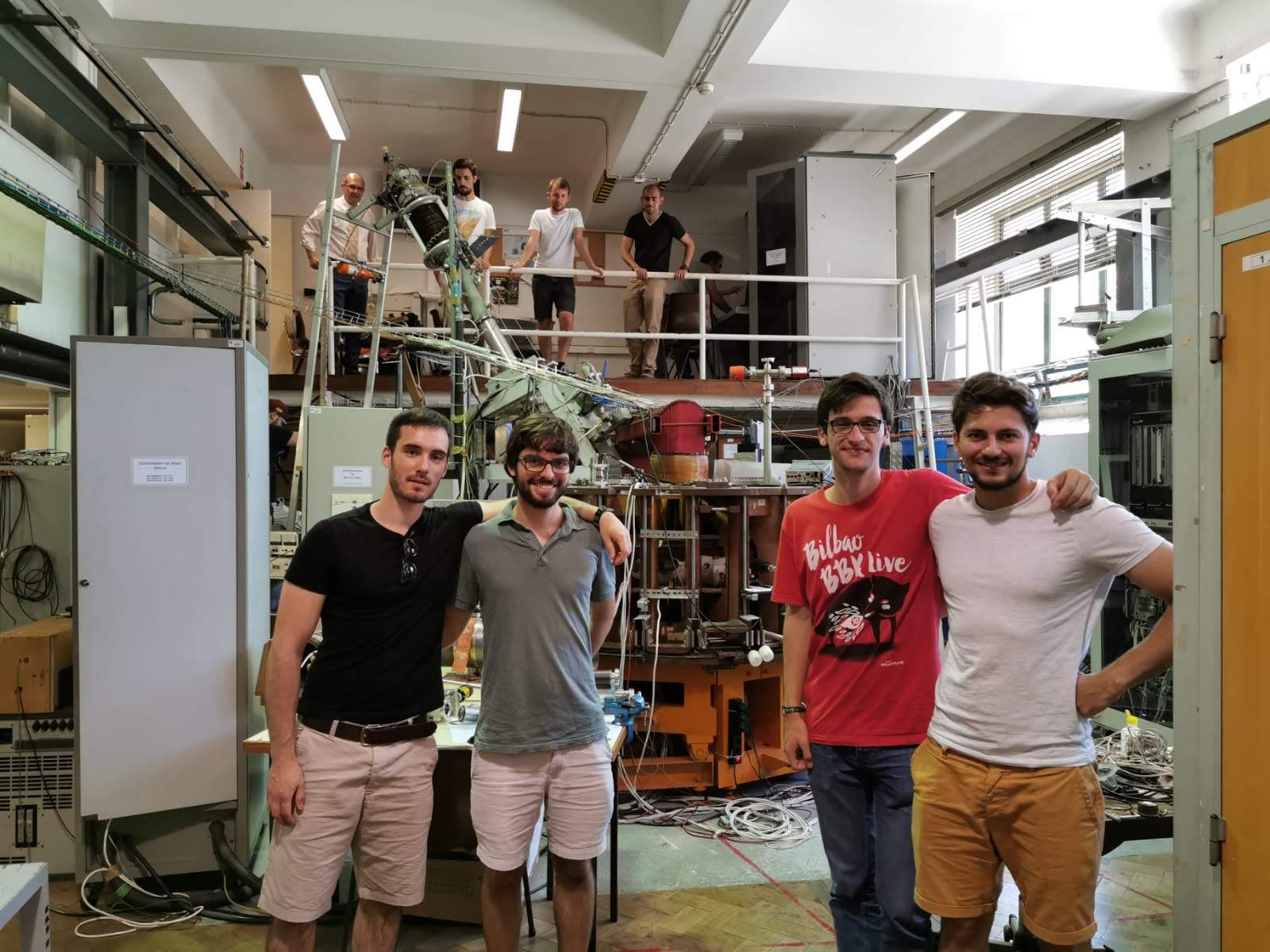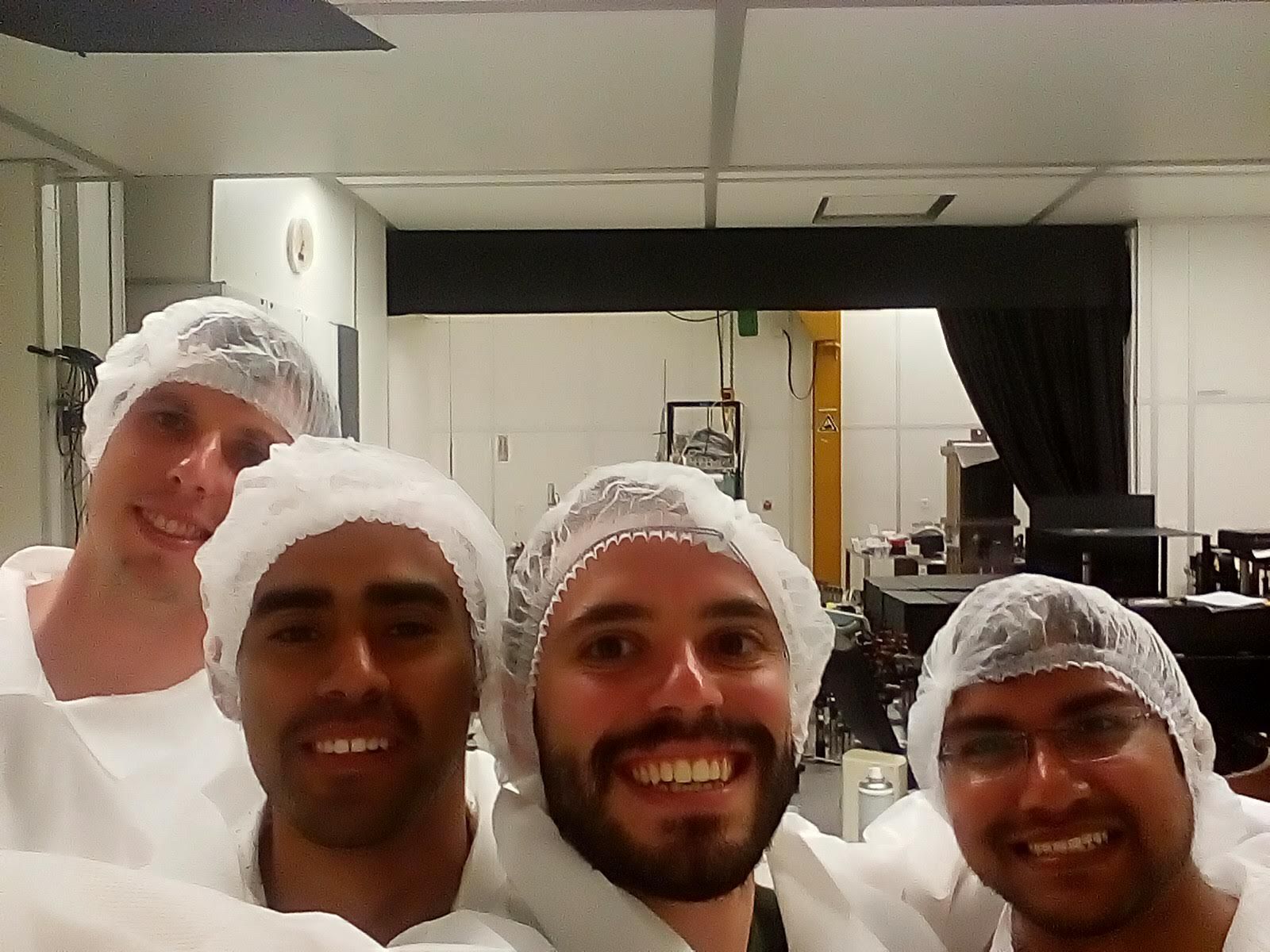Supported by FuseNet, Javier Hidalgo Salaverri, Jordi Manyer Fuertes and Dante Loi went to Lisbon's Instituto de Plasmas e Fusao Nuclear to attend PlasmaSurf 2019. It covers the basis of plasma science, intense lasers-plasma interaction and fusion technologies. As for the surfing part, well, check out the photo at the bottom of the article. 
My name is Javier Hidalgo, I am a Master student in Energy Engineering at the University of Seville and part of the Plasma Science and Fusion Technology (PSFT) group of the University of Seville. During the 2019 Summer, I got the opportunity of participating in the Plasmasurf Summer School in Lisbon. This Summer school covers the basis of plasma science, intense lasers-plasma interaction and fusion technologies. Lectures start with the MHD description of plasma and with some notes about lasers, from those foundations a more complex understanding of the physical and engineering problems in fusion devices is built.
Some lectures give a more practical insight of the daily work with a tokamak, through some data analysis, using Python, from a Langmuir probe controlled by the eLab software of the IST. A visit to ISTTOK and its control room served as the farewell clasp, there we could see the tokamak itself, all its diagnostics and observe the work necessary for its operation.
But not everything is plasma. There is also time for some outdoor activities. Rock climbing, kayaking, mountain board and, of course, surfing gave us the chance to get to know each other more closely. And if you couldn’t understand properly the MHD equations you will, at least, take some good friends that you will surely encounter in your future in fusion research.
- Javier Hidalgo Salaverri
 PlasmaSurf is a one-week summer school held in the beautiful city of Lisbon and organized by the prestigious Instituto de Plasmas e Fusao Nuclear (IPFN), which is part of the Istituto Superior Técnico (IST). The course provides an introduction to plasma physics, high intensity lasers and controlled nuclear fusion, and combines theory classes with practical workshops. Thanks to the remote laboratory (or e-lab) at IST, the experiments studied in the workshops could be performed live, which allowed to work with real data.
PlasmaSurf is a one-week summer school held in the beautiful city of Lisbon and organized by the prestigious Instituto de Plasmas e Fusao Nuclear (IPFN), which is part of the Istituto Superior Técnico (IST). The course provides an introduction to plasma physics, high intensity lasers and controlled nuclear fusion, and combines theory classes with practical workshops. Thanks to the remote laboratory (or e-lab) at IST, the experiments studied in the workshops could be performed live, which allowed to work with real data.
The lectures took place in the mornings and part of the afternoon, whilst the rest of the day was spent doing outdoor activities such as kayak, surf, rock climbing or visiting Lisbon. Needless to say that the amazing weather that Lisbon has to offer contributed to making these already great activities even better. We all had a fantastic time both in class and during the complementary activities!
- Jordi Manyer Fuertes
Being and electronic engineering student I am relatively new in the field of nuclear fusion and plasma physics in general. The lectures given at Plasmasurf have been very enlightening, and full of content. However, the thing that I have enjoyed the most has been the possibility to talk with people really involved in the field. Make questions about the newest developments, what are the problems that inevitably arise when trying to build a so complex machine like ITER…

During one presentation the lecturer made a comparison between the number of component in an airplane and ITER, turns out that and airplane has roughly one million component while ITER at least ten times more. The whole audience was astonished by this number, but it did not surprise me that much, in Very Large Scale Integration circuits, electronic engineers have to deal with billions of transistors in a single chip, and all of them have to be consistently wired together.
At the end of the day, I think that big progresses have been made in fusion, although, there is still a lack of engineering expertise essential for succeed with such a difficult goal. Events like Plasmasurf are crucial for making the new generation of engineers aware with the challenges that we need to face in fusion.
- Dante Loi
